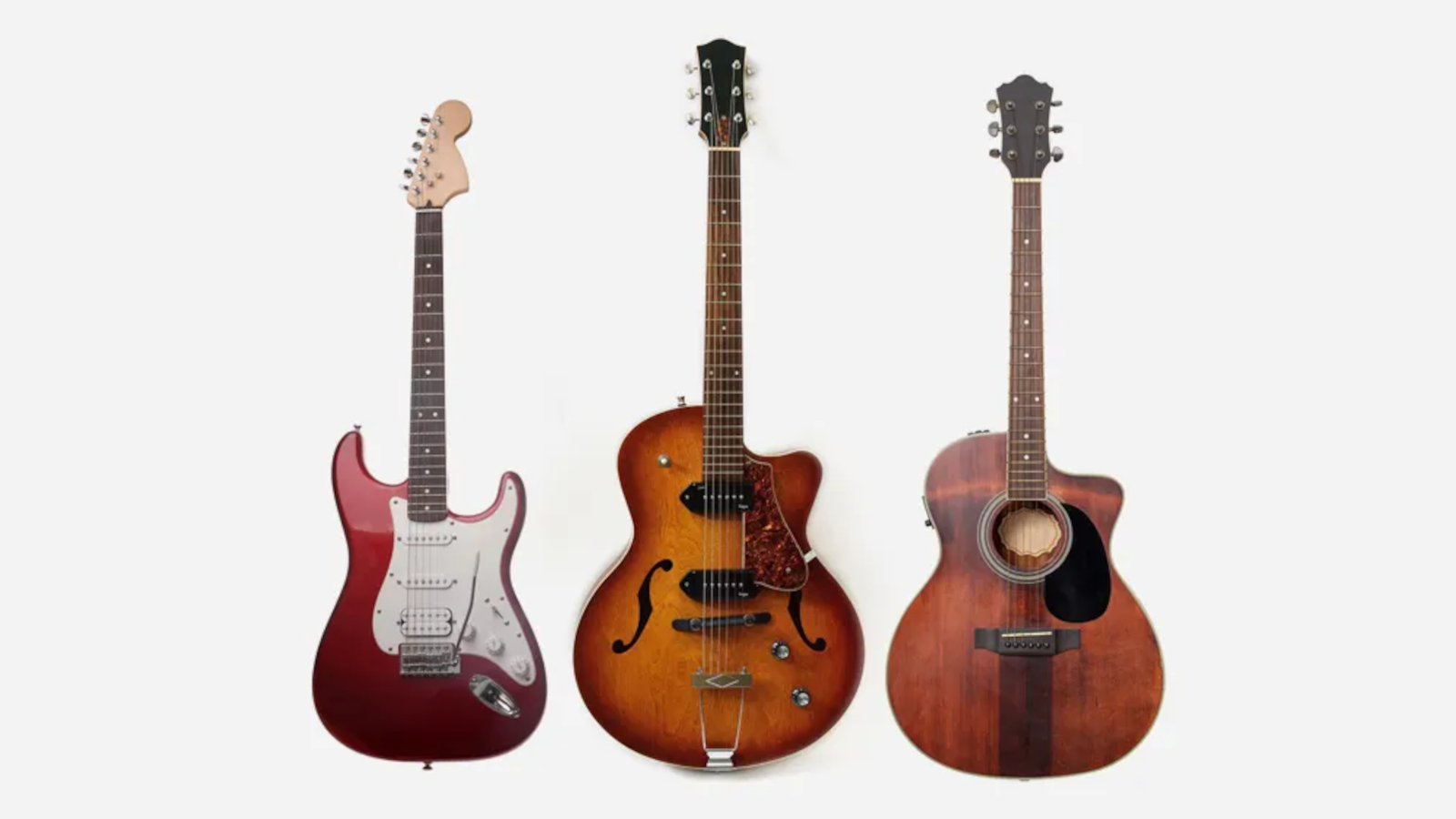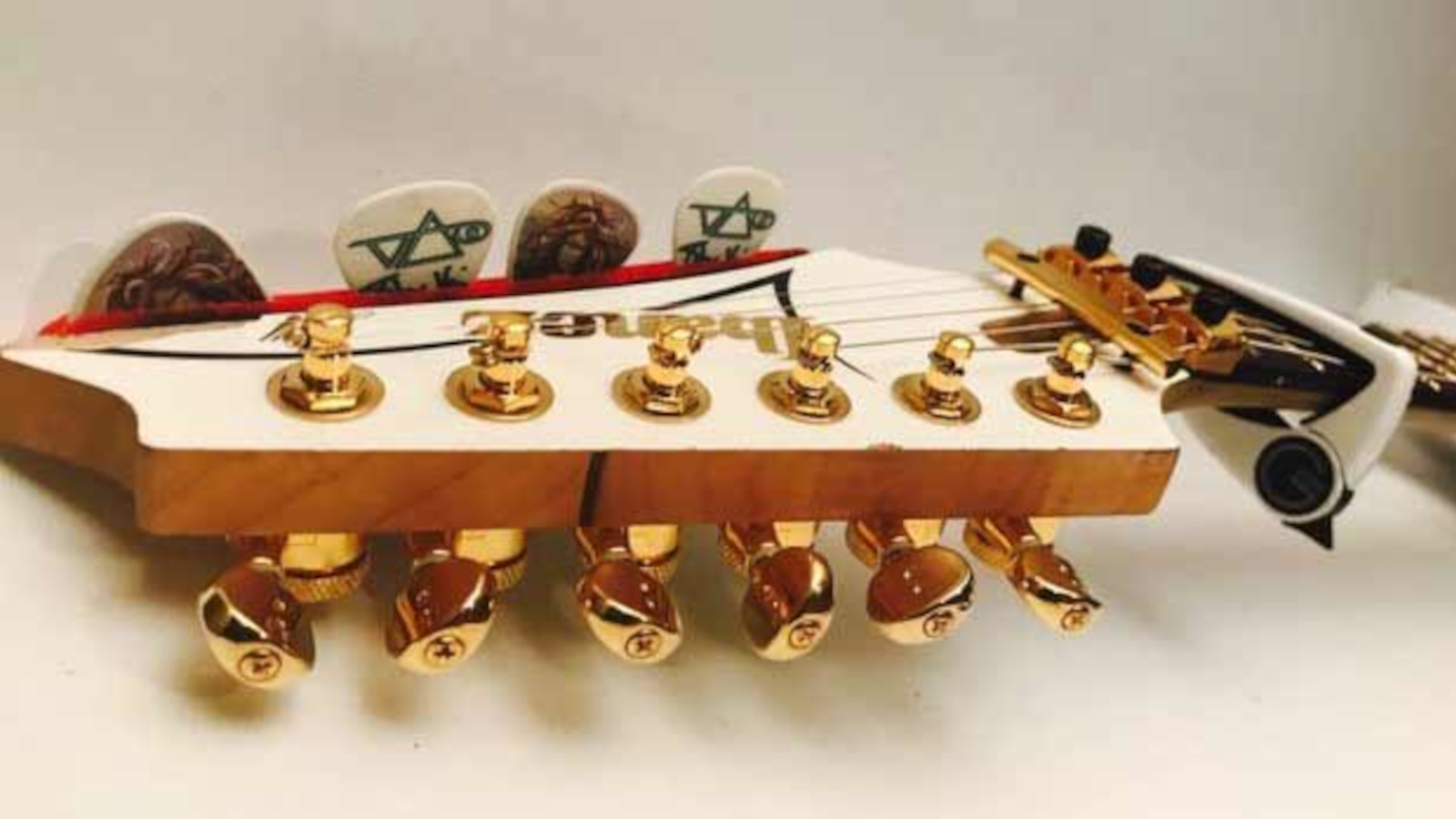Here’s Why the Ratio Machine Heads Can Make Tuning Quicker, More Predictable and More Intuitive
From Steve Vai to Ed Sheeran, Graph Tech’s Dave Dunwoodie tells ‘GP’ how these innovative tuners have made life easier for guitarists of all types

Anyone who’s wasted precious seconds onstage trying to wrangle the pitch of a low E string knows that tuning accurately, especially under pressure, isn’t easy.
Nerves aside, the problem has to do with gear ratio – that is, the number of turns a tuning key must make for its corresponding tuning post to complete one full revolution.
Common guitar gear ratios include 14:1 and 18:1, all of which simply means that you need to twist your tuning knob 14 or 18 times, respectively, to spin the post once.
Traditionally, every machine head on an electric guitar or acoustic guitar has had the same gear ratio. But as we know, each string has its own unique properties compared to others in the set.

One outcome of this is that you have to crank a high E string to bring it up to pitch, while a low E string requires careful nudging to prevent it from darting past the target pitch.
Many years ago, Dave Dunwoodie began thinking about creating a better machine head. Dunwoodie is the founder of Graph Tech Guitar Labs, and his response to the gear ratio issue is a machine head he invented called Ratio.
Each string reacts the same way to any tuning adjustments
Dave Dunwoodie
Unlike traditional gears, each machine head in the set has a gear ratio custom designed for its intended string: 12:1 (high E), 20:1 (B), 35:1 (G; 14:1 for a wound G with a thin core), 20:1 (D), 24:1 (A) and 39:1 (low E).
All the latest guitar news, interviews, lessons, reviews, deals and more, direct to your inbox!
For seven-string guitars, a low B machine head is also available featuring a gear ratio of 48:1.
As a result, Dunwoodie says, “each string reacts the same way to any tuning adjustments – no slowing down for the low E or G string, or twisting away on the high E.”
Ratio’s unique approach also means that, for any string you’re trying to tune, each half-turn of a tuning knob adjusts the pitch of your string by a semitone.
Here, Dunwoodie explains the story behind Ratio’s concept and development...
How did you come up with the idea for Ratio machine heads?
I was working on inventing a tunable tremolo for Graph Tech Guitar Labs. The idea was to pull up on the tremolo arm and lock it to make the guitar shift into a predetermined open tuning, then push down on the arm and lock it to make it go into another tuning.
Every string on a guitar is different when it comes to both overall thickness and the thickness of its core
Dave Dunwoodie
While researching that project, I stumbled onto an interesting tangent of a discovery: why each string reacts differently to tension changes when you’re trying to tune your guitar.
Surprisingly, it has nothing to do with how thick the string is. Instead, it has everything to do with the diameter of the string’s core.
Every string on a guitar is different when it comes to both overall thickness and the thickness of its core. A plain G string has a thick core and is very sensitive to any tuning adjustment, while a D string – which is wider overall than the G string – has a thin core and is insensitive to tuning adjustments.
This made me realize why I had so much trouble quickly tuning the G and low E strings onstage: because of their thick cores, they were hypersensitive to any adjustment, so you have to bring them up to pitch slowly to avoid overshooting your target pitch.
Once I understood the core of the problem – no pun intended – I began to think about solutions.

What was the main source of the problem?
I did some research and found that machine heads have always been designed the same way, with one gear ratio for every string, regardless of whether you’re playing a guitar, bass, violin or banjo.
I thought, What if we could instead make every string react the same way to tuning adjustments
Dave Dunwoodie
I thought, What if we could instead make every string react the same way to tuning adjustments, so tuning a D, E or G string would feel exactly the same? Would it make a difference to speed and accuracy?
Fast-forward 25 years, and I still had that idea in the back of my mind.
How long did it take to make the idea a reality?
At this point, I was gigging three to five nights a week, working on Graph Tech during the day, and still having the bothersome hit-or-miss tuning issues when I was out playing.
My company had time to look into developing a new product, so we decided to figure out what the correct gear ratios should be for each string of a guitar.

Our goal was to allow fine tuning for the thick-core strings and coarser tuning for the thin-core strings, so that every string felt and reacted the same way to tuning adjustments.
Tuning on the fly with Ratio machine heads, or performing a quick little tweak of any string, is much quicker, more predictable and more intuitive
Dave Dunwoodie
Once we had the right ratios calculated, I took the prototype of our Ratio machine heads to a gig for a test drive. The first night was a little strange. Out of habit, I found myself being too careful and slow when trying to tune the G and low E strings. But the second night, I got the knack of it, and by the third night I was cruising.
Doing tuning tweaks during or in between songs was a breeze. I discovered that, once you’ve got the feel, tuning on the fly with Ratio machine heads, or performing a quick little tweak of any string, is much quicker, more predictable and more intuitive.
If your electronic tuner says you’re flat by six cents, you know how much to turn the tuning button to get it back to pitch, no matter which string you’re working with.
Thanks to experiences like these, we knew that we had come up with a machine head that would serve guitarists well and be an invention we could feel proud of.

From that point, how long did it take to bring Ratio machine heads to market?
We spent the next couple of years refining the design, tooling and filing for patents around the world. Then we introduced Ratio multigeared machine heads to the guitar world in 2012.
[InvisoMatch mounting plates] let you easily install the Ratio machine heads without modifying your guitar
Dave Dunwoodie
They can be now seen on guitars played by artists like Steve Vai and Ed Sheeran, and on instruments from manufacturers that include Martin, Framus, Washburn and others.
We also recognized that many guitarists prefer not to modify their gear, so we created a range of InvisoMatch mounting plates.
They let you easily install the Ratio machine heads without modifying your guitar.
Just choose the mounting plate that matches the screw hole or pinhole of your factory-installed head. It’s a three-step process that gets you up and running in about seven minutes.
Appearing in dozens of tuner button styles and finishes, Ratio machine heads are available for guitar, bass and ukulele. Learn more about Ratio at graphtech.com
Christopher Scapelliti is editor-in-chief of GuitarPlayer.com and the former editor of Guitar Player, the world’s longest-running guitar magazine, founded in 1967. In his extensive career, he has authored in-depth interviews with such guitarists as Pete Townshend, Slash, Billy Corgan, Jack White, Elvis Costello and Todd Rundgren, and audio professionals including Beatles engineers Geoff Emerick and Ken Scott. He is the co-author of Guitar Aficionado: The Collections: The Most Famous, Rare, and Valuable Guitars in the World, a founding editor of Guitar Aficionado magazine, and a former editor with Guitar World, Guitar for the Practicing Musician and Maximum Guitar. Apart from guitars, he maintains a collection of more than 30 vintage analog synthesizers.
